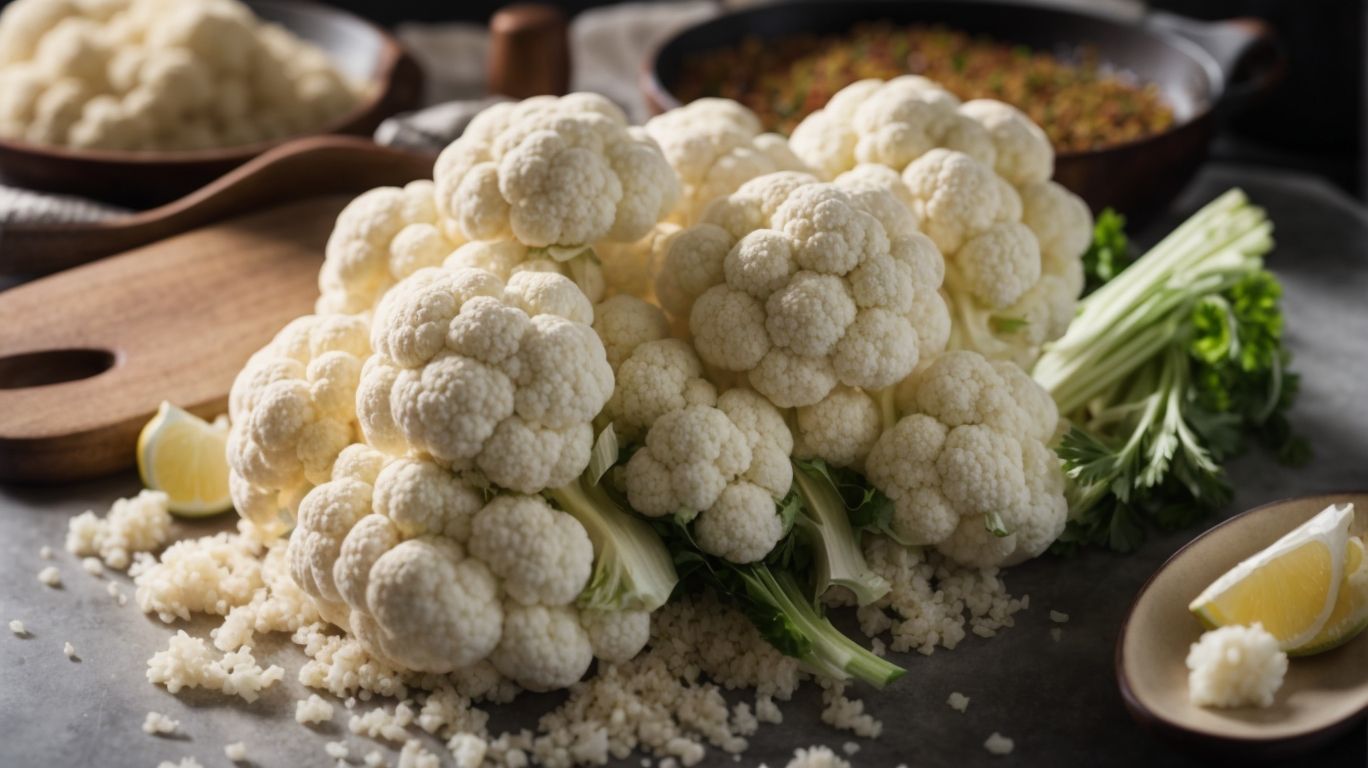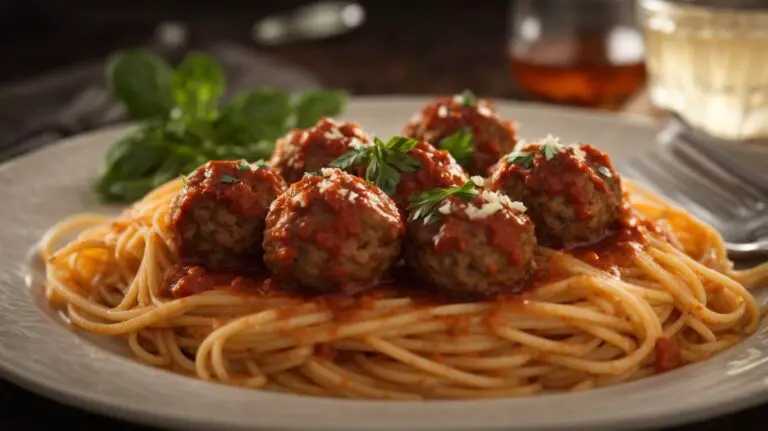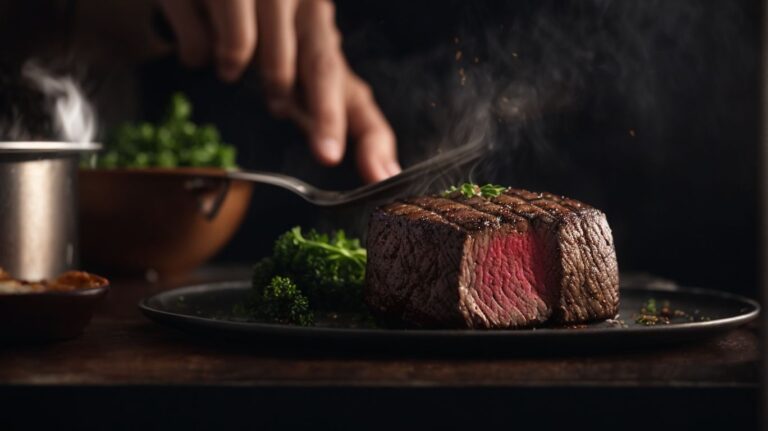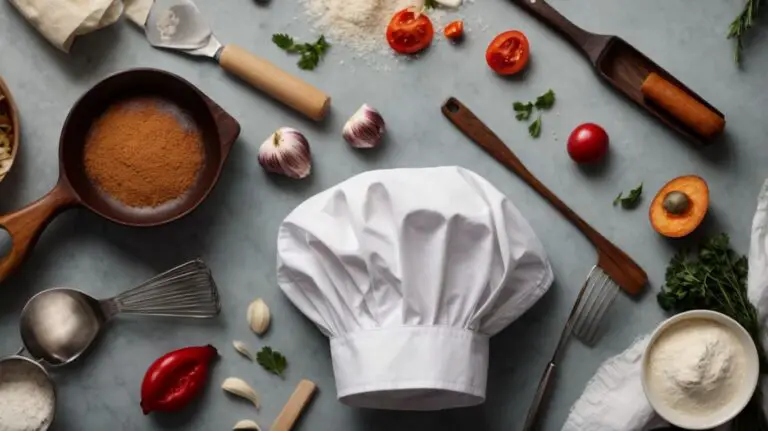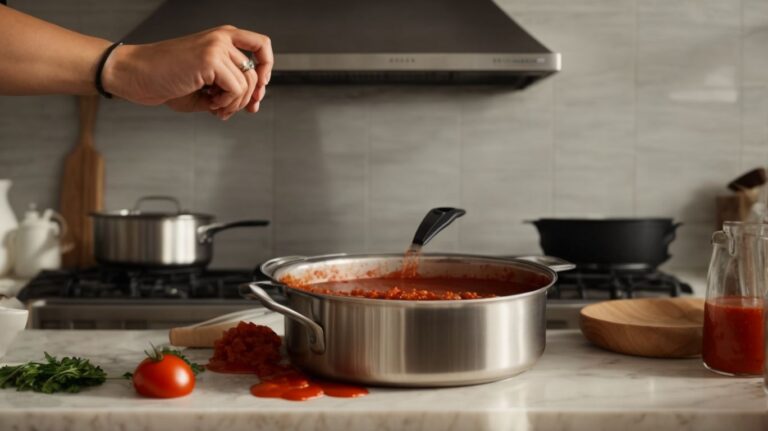How to Cook Cauliflower for Rice?
Looking for a healthy and delicious alternative to traditional rice?
Explore the reasons why cauliflower rice is a fantastic option, from its health benefits to being a low-carb and gluten-free alternative.
Discover easy-to-follow recipes on how to make cauliflower rice, along with the tools you need to prepare it.
Learn about different cooking methods and serving suggestions to elevate your cauliflower rice dishes.
Get expert tips on how to achieve the perfect cauliflower rice every time. Let’s get cooking!
Key Takeaways:
Why Use Cauliflower Rice?
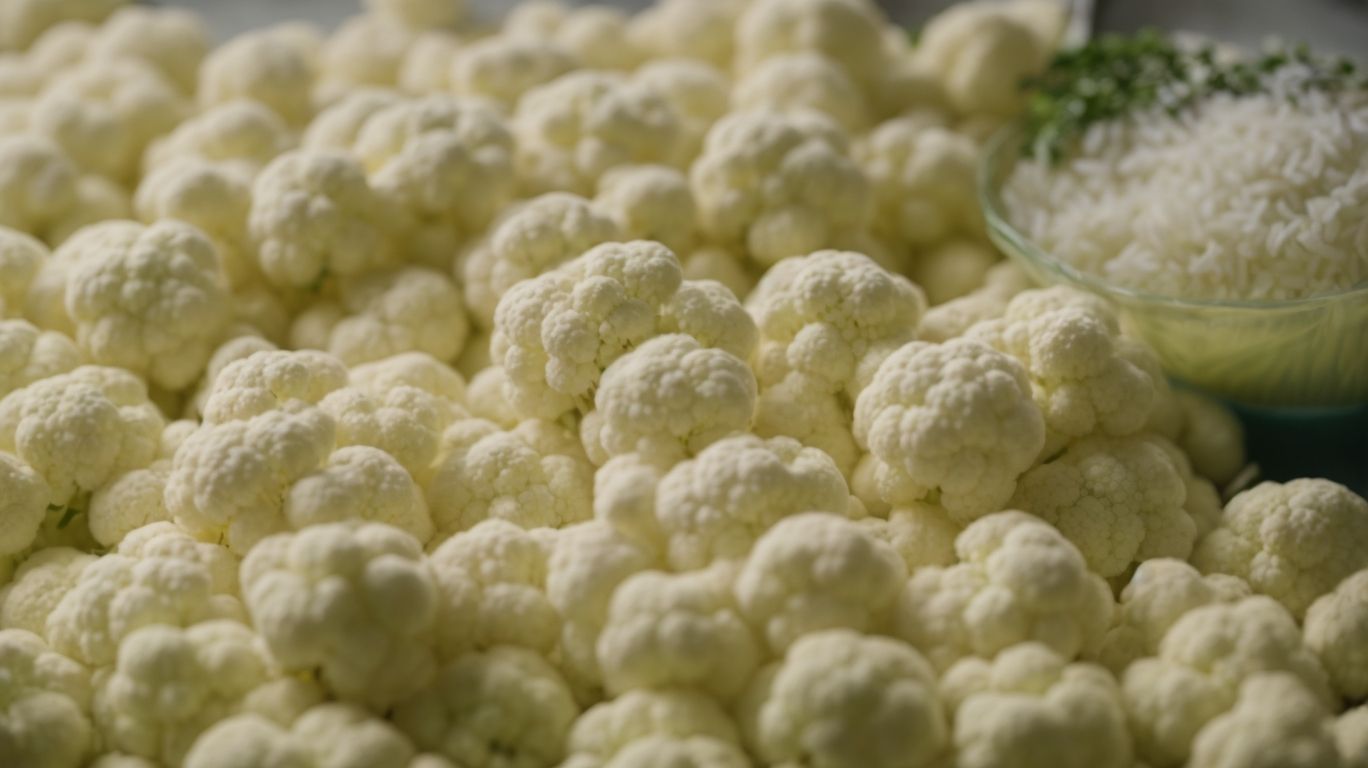
Credits: Poormet.Com – Eugene Baker
Integrating cauliflower rice into your diet offers a plethora of health benefits and opens up a world of culinary possibilities.
One of the key advantages of cauliflower rice is its low-carb nature, making it an excellent substitute for traditional rice for those looking to reduce their carbohydrate intake. Along with being a versatile ingredient that can be used in various dishes, it is also rich in essential nutrients such as fiber, vitamins C, K, and B6, as well as minerals like potassium and manganese.
Cauliflower rice is a great way to sneak in extra vegetables into your meals without compromising on taste. Whether you are following a specific diet or simply looking to incorporate more nutrient-dense foods into your daily meals, cauliflower rice provides a flavorful, healthy, and satisfying option that can easily become a staple in your kitchen.
Health Benefits
Cauliflower rice is a nutritional powerhouse, packed with essential vitamins, minerals, and fiber that contribute to overall well-being.
This versatile vegetable is not only low in calories but also high in nutrients important for good health. Cauliflower rice provides a good amount of vitamin C, vitamin K, and folate, key for immune function, bone health, and cell division, respectively. It is a great source of antioxidants that help protect the body from oxidative stress. The fiber in cauliflower rice aids in digestion and promotes a feeling of fullness, making it a fantastic choice for weight management.
Low Carb and Gluten-Free Option
Cauliflower rice stands out as a low-carb and gluten-free alternative to traditional rice, making it an ideal choice for health-conscious individuals.
Not only does cauliflower rice offer the advantage of being significantly lower in carbohydrates compared to regular rice, but it also provides a good source of essential nutrients such as fiber, vitamins, and minerals. This versatile substitute can be easily incorporated into various recipes, from stir-fries to sushi bowls, adding a light and fluffy texture with a mild flavor that pairs well with different seasonings and ingredients.
Cauliflower rice serves as a convenient option for those following gluten-free diets, as it naturally contains no gluten, offering a wholesome and satisfying base for meals without compromising on taste or texture. Its ability to absorb flavors and adapt to different culinary styles makes it a versatile ingredient that can elevate the nutritional value of dishes without sacrificing deliciousness.
How to Make Cauliflower Rice?
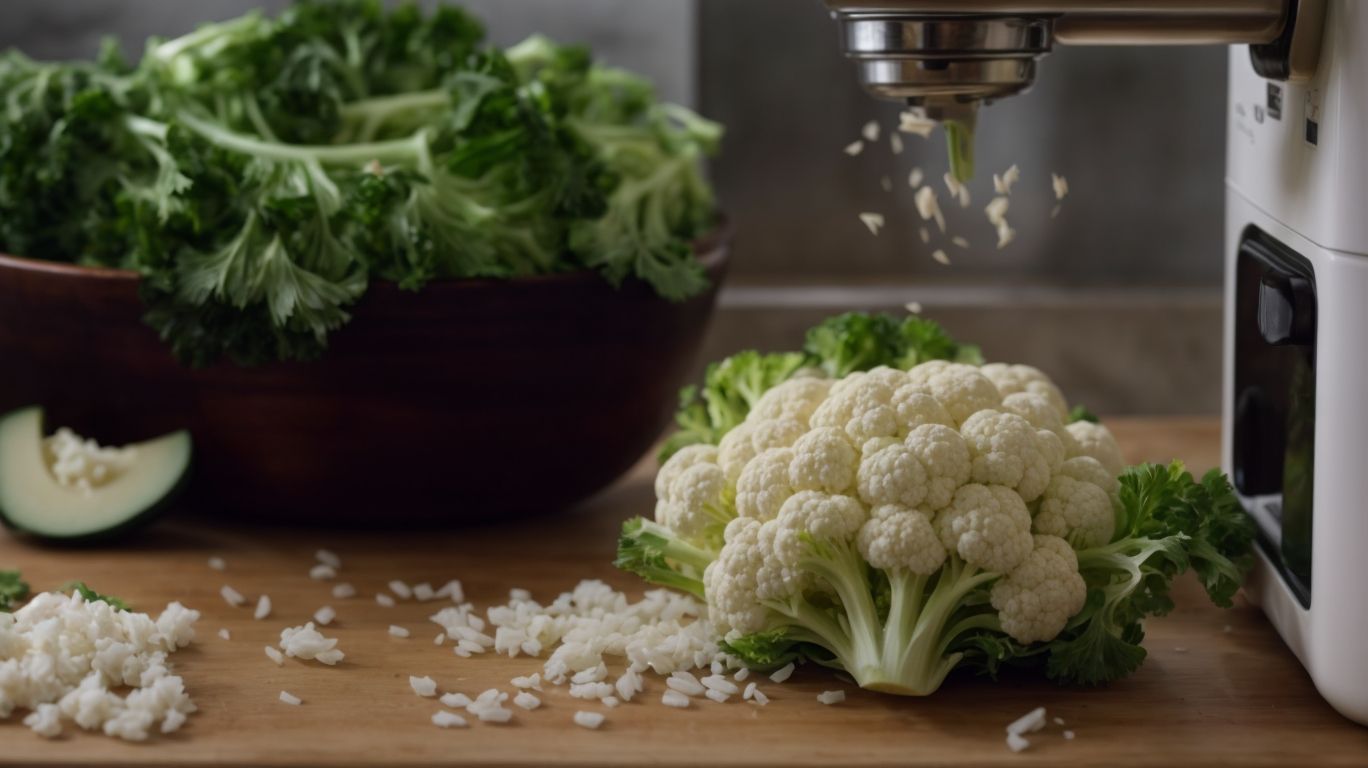
Credits: Poormet.Com – Brian Thompson
Mastering the art of creating cauliflower rice involves simple techniques and a few key ingredients to elevate the dish’s flavor profile.
One popular technique for preparing cauliflower rice is to start by washing and drying the cauliflower thoroughly. Once clean, you can either grate the cauliflower using a box grater or pulse it in a food processor until it reaches a rice-like consistency. Another preparation method is to steam the cauliflower florets before processing to achieve a softer texture.
- For ingredients, you can customize your cauliflower rice to suit your taste preferences. Additions like garlic, onions, bell peppers, or even herbs like parsley or cilantro can enhance the flavor profile. Regarding seasoning, options like cumin, paprika, turmeric, or soy sauce can elevate the taste and aroma of the dish.
Basic Cauliflower Rice Recipe
Creating a basic cauliflower rice recipe involves simple steps such as grating cauliflower, sautéing with onions, and seasoning with salt and pepper for a delightful side dish.
To start, carefully remove the leaves and stem from a head of cauliflower, then cut it into florets. Using a box grater or a food processor, grate the cauliflower into rice-sized pieces.
Next, in a large skillet, sauté finely chopped onions until translucent, adding the grated cauliflower to cook until tender. Season the mixture with a pinch of salt and a generous amount of freshly ground black pepper for added flavor. Stir well to ensure the seasoning is evenly distributed.
Your cauliflower rice is now ready to serve alongside your favorite main dish or as a nutritious base for other recipes.
Flavored Cauliflower Rice Recipes
Elevate your culinary experience with flavored cauliflower rice recipes that burst with vibrant colors, tantalizing aromas, and enriching nutrients for a wholesome meal.
By experimenting with different seasoning options such as aromatic garlic and herb blends, zesty lemon pepper, or warming curry spices, you can transform plain cauliflower rice into a sensational side dish or main course.
Utilizing various skillet techniques like stir-frying for a crispy texture or steaming for a softer consistency adds versatility to your cauliflower rice creations.
Enhance the nutritional value of your dish by incorporating ingredients like colorful bell peppers, protein-rich chickpeas, and vitamin-packed spinach, ensuring your meal is not only delicious but also balanced.
These cauliflower rice recipes offer a unique twist to traditional rice dishes, making them ideal for light lunches, satisfying dinners, or flavorful meal prep options that cater to a variety of dietary preferences.
What Tools Do You Need to Make Cauliflower Rice?
To embark on your cauliflower rice culinary journey, essential tools like a food processor, knife, and chopping board are critical for effortless preparation and storage.
Regarding achieving that perfect rice-like consistency with cauliflower, the food processor plays a crucial role in breaking down the florets into fine grains, saving you time and effort in comparison to manual chopping. A sharp knife is necessary for trimming and cutting the cauliflower into manageable pieces before processing. The chopping board provides a stable surface for chopping and ensures a clean workspace, making your cooking experience more organized and enjoyable.
After mastering the technique of creating cauliflower rice, the next step is proper storage to maintain its freshness and taste. Utilize airtight containers or resealable bags to store the cauliflower rice in the refrigerator, ensuring it stays fresh for up to 4-5 days. Remember to label the containers with the date of preparation for easy tracking and consumption.
Food Processor
A food processor is a time-saving essential for creating cauliflower rice with precision and efficiency, ensuring optimal texture and flavor in your dishes.
When using a food processor to make cauliflower rice, the technique is essential for achieving consistent rice-like grains. Pulse the cauliflower florets in batches until the desired rice-like texture is achieved, being careful not to over-process to avoid mushiness. Preparation begins with washing and drying the cauliflower, removing any leaves and cutting it into manageable florets. Processing the cauliflower in small batches ensures even cutting and helps in maintaining the integrity of the rice grains.
After creating cauliflower rice, proper storage is crucial to extend its freshness. Store the rice in an airtight container or a resealable bag in the refrigerator for up to 4-5 days. To prevent the cauliflower rice from becoming too moist, place a paper towel in the container to absorb excess moisture. Storage in the freezer is also an option; simply place the rice in a freezer-safe bag, remove excess air, and label with the date before freezing for up to 2-3 months, ensuring you have quick access to this versatile ingredient whenever needed.
Box Grater
A box grater offers a manual approach to grating cauliflower for rice, providing a rustic charm and hands-on experience in preparing this versatile ingredient.
When using a box grater, the technique involves firmly holding the cauliflower head with one hand and grating it using swift downward strokes. This method allows for control over the size of the ‘rice’ grains, which can affect the overall texture of the dish.
For preparation, ensure the cauliflower is cleaned and dried thoroughly before grating to prevent excess moisture that can lead to clumping. Storing cauliflower rice properly is crucial for maintaining its freshness; place any leftovers in an airtight container in the refrigerator for up to 3 days.
Knife and Chopping Board
A sharp knife and a sturdy chopping board are essential tools for finely chopping cauliflower into rice-sized grains, ensuring precision and control in the preparation process.
Regarding mastering the technique of transforming cauliflower into rice, a sharp knife allows you to make clean cuts with ease, while a sturdy chopping board provides a stable surface for chopping. Start by removing the leaves and stem from the cauliflower head, then carefully cut it into smaller florets. Next, using the knife, chop the florets into smaller pieces, resembling the size of rice grains.
Proper preparation is key to achieving the desired texture and consistency. After chopping the cauliflower, you can either cook it immediately or store it to use later. To maintain its freshness and aroma, store the cauliflower rice in an airtight container or a resealable bag in the refrigerator. This will help preserve its flavor and prevent it from drying out.
How to Cook Cauliflower Rice?
Cooking cauliflower rice offers a canvas of possibilities, from sautéing and steaming to roasting and boiling, each method unlocking distinct flavors and textures.
When sautéing cauliflower rice, you can infuse it with aromatic herbs and spices, creating a fragrant and flavorful dish.
Steaming, on the other hand, preserves the natural sweetness of the cauliflower while maintaining its crunchiness.
Roasting cauliflower rice enhances its nutty undertones and brings out a caramelized flavor profile.
Boiling is a simple yet effective method that can soften the cauliflower rice to a tender texture for diverse culinary applications.
Sautéing
Sautéing cauliflower rice in a skillet infuses it with rich flavors, creating a delightful aroma and a perfect balance of seasoning for a satisfying culinary experience.
When sautéing cauliflower rice, the key to enhancing its flavor lies in the skillet cooking process. The high heat of the skillet caramelizes the edges of the cauliflower, bringing out nutty notes and adding depth to the dish. To further amplify the taste profile, consider incorporating a variety of seasonings such as garlic, paprika, or herbs and spices. Experimenting with different combinations can help you discover unique flavor profiles that complement the natural taste of cauliflower. Ensuring that the rice is evenly seasoned throughout the cooking process ensures each bite is bursting with delicious flavors.
Steaming
Steaming cauliflower rice preserves its natural goodness and nutrients, offering a light and fluffy texture that complements a variety of dishes.
When preparing cauliflower rice, utilizing the steaming technique ensures that the essential nutrients such as Vitamin C and fiber are retained, unlike boiling methods that may cause nutrient loss. The gentle steaming process maintains the vegetable’s freshness and vibrant color, adding an appealing look to your meals. Steamed cauliflower rice imparts a delicate flavor, making it a versatile ingredient suitable for stir-fries, salads, and even sushi rolls.
Roasting
Roasting cauliflower rice imparts a delightful depth of flavor and caramelized notes, enhancing its natural sweetness and aroma for a mouthwatering culinary experience.
When roasting cauliflower rice, there are various techniques that can be employed to achieve optimal results. One popular method is to spread the cauliflower rice evenly on a baking sheet and roast it at a high temperature to create a crisp texture on the edges while preserving a tender interior.
Experimenting with different flavor additions such as garlic, herbs, or spices can further enhance the taste profile of the dish, creating a harmonious blend of savory and earthy notes.
Incorporating aromatic ingredients like shallots or citrus zest can elevate the aroma of the cauliflower rice, filling the kitchen with irresistible scents that beckon diners to the table.
Boiling
Boiling cauliflower rice offers a simple yet effective cooking method that retains its natural freshness and texture, making it a versatile addition to various recipes.
When preparing cauliflower rice through boiling, it is crucial to use a technique that maintains a balance between keeping the rice tender and preventing it from becoming mushy.
One key preparation step involves ensuring the cauliflower is chopped into uniform pieces to promote even cooking, whether you are using a steamer, a stovetop pot, or a microwave.
Flavor considerations can elevate the dish; adding a splash of lemon juice or a sprinkle of fresh herbs post-boiling can enhance the overall taste profile.
What to Serve with Cauliflower Rice?
Pairing cauliflower rice with vibrant stir-fries, aromatic curries, wholesome casseroles, and refreshing salads elevates your dining experience with a burst of flavors and textures.
Stir-fries brimming with colorful veggies and succulent meats complement the lightness and versatility of cauliflower rice, offering a delightful contrast in every bite. On the other hand, indulgent curries, whether creamy kormas or spicy masalas, perfectly soak into the fluffy grains of cauliflower rice, creating a harmonious blend of rich and delicate flavors.
Casseroles, enriched with gooey cheese or robust tomato sauces, find their ideal partner in cauliflower rice, adding a nutritious twist to traditional comfort food dishes. Meanwhile, zesty salads with crunchy greens, juicy fruits, and tangy dressings provide a refreshing and vibrant accompaniment that balances the earthy tones of cauliflower rice.
Stir-Fry Dishes
Incorporating cauliflower rice into vibrant stir-fry dishes with fresh veggies, aromatic seasonings, and skillful sautéing techniques offers a delightful fusion of flavors and textures.
When preparing a stir-fry with cauliflower rice, the choice of vegetables plays a crucial role in the overall dish. Onions are a fantastic addition as they add both flavor and texture. You can incorporate a variety of colorful bell peppers, snap peas, carrots, and broccoli for a visually appealing and nutritious stir-fry.
For seasoning, options are endless! From classic soy sauce and garlic to sesame oil and ginger, you can experiment with different combinations to elevate the taste profile. Don’t forget a touch of sweetness with a splash of honey or a sprinkle of brown sugar for balance.
As for technique, mastering the sautéing process is key. Ensure your pan is hot before adding the cauliflower rice and vegetables. Stir frequently to evenly cook the ingredients and achieve that perfect crisp-tender texture. Combine all these elements with the *right sautéing*, and you’ll have a delicious cauliflower rice stir-fry that will satisfy your taste buds.
Curries
Infusing cauliflower rice into aromatic curries with flavorful seasonings, exotic spices, and precise cooking techniques creates a sensory feast that satisfies both palate and soul.
When seasoning cauliflower rice for curries, one can experiment with a range of options like garam masala, turmeric, cumin, and coriander to elevate the depth of flavor. The seasoning combinations can vary depending on the regional influences, offering a versatile canvas to play with tastes and aromas. Integrating freshly chopped herbs like cilantro or mint at the end of the cooking process can add a burst of freshness to the dish.
Exploring different techniques such as slow cooking the cauliflower rice in the curry sauce or stir-frying it briefly before adding it to the pot can contribute unique textures and intensify the overall culinary experience.
Casseroles
Incorporating cauliflower rice into wholesome casseroles with a medley of fresh ingredients, savory seasonings, and baking expertise results in a comforting and nutritious meal for all occasions.
When preparing a cauliflower rice casserole, the key is to ensure the cauliflower rice is cooked to perfection to mimic the texture of traditional rice. This can be achieved by sautéing the cauliflower rice with a touch of olive oil, garlic, and herbs for added flavor.
For an added depth of taste, consider mixing in ingredients like bell peppers, onions, and mushrooms before baking. These vegetables not only enhance the flavor profile but also provide additional nutrients and colors to the dish.
Regarding the baking process, covering the casserole dish with foil initially helps retain moisture and ensures even cooking. Towards the end of the baking time, removing the foil allows for a golden crust to form on top, adding a delightful crunch to the dish.
Salads
Embracing cauliflower rice in vibrant salads teeming with crisp vegetables, zesty dressings, and a touch of freshness offers a refreshing and nutritious dining experience that delights the senses.
Regarding vegetables for your cauliflower rice salad, think colorful peppers, crunchy cucumbers, juicy cherry tomatoes, and flavorful herbs like parsley and mint, adding layers of textures and tastes. For dressing options, consider a light vinaigrette with lemon juice and olive oil to enhance the flavors without overpowering the natural goodness of the ingredients. Selecting the freshest produce is key to creating a vibrant salad that bursts with both flavor and nutrients, so be sure to choose vegetables that are in season and at their peak ripeness.
Tips for Perfect Cauliflower Rice
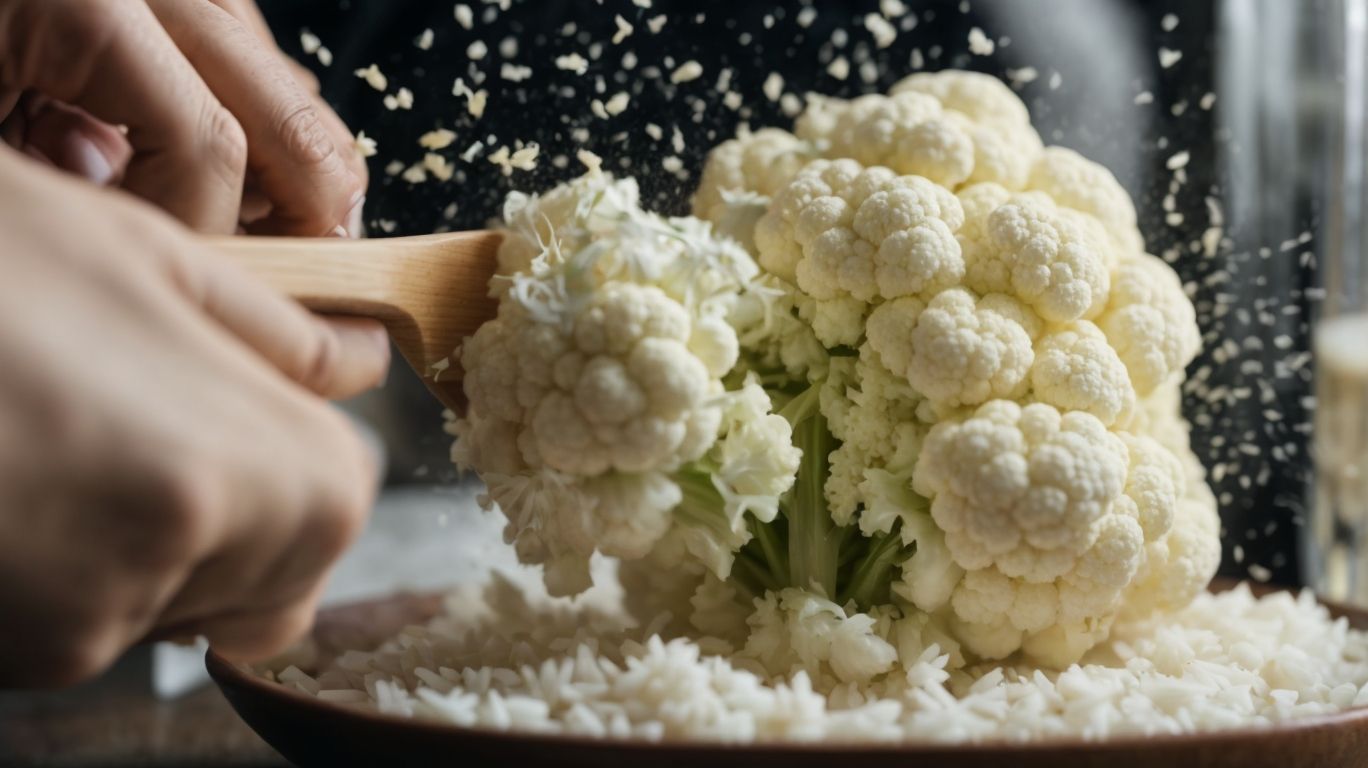
Credits: Poormet.Com – Terry Robinson
Achieving perfect cauliflower rice entails mastering key tips such as precise cooking techniques, flavor enhancements, and proper storage practices to preserve its freshness and aroma.
Regarding technique, one crucial step is to not over process the cauliflower, as this can result in a mushy texture. Opt for pulsing it in a food processor until it resembles rice grains.
For flavor adjustments, consider adding spices like cumin, paprika, or garlic powder during the cooking process to elevate the taste profile.
Proper storage is essential for maintaining its quality; store any leftovers in an airtight container in the refrigerator for up to 3 days to enjoy its freshness longer.
Avoid Overcooking
Ensuring cauliflower rice is not overcooked is crucial to preserving its desired texture, flavor, and nutritional integrity, making it a delightful addition to your meals.
Proper preparation techniques are key to achieving the ideal consistency of cauliflower rice. Start by grating or pulsing fresh cauliflower florets in a food processor until they resemble rice grains. This step ensures a light, fluffy texture without turning mushy. Sautéing the cauliflower rice in a pan with a bit of oil and seasonings over medium heat helps to maintain its crunchiness and enhances its natural flavor. It’s important to keep a close eye on the cooking process to avoid overcooked cauliflower rice, which can result in a soggy dish with diminished nutritional value.
Add Flavorful Ingredients
Infusing cauliflower rice with a medley of flavorful ingredients, aromatic seasonings, and savory spices elevates its taste profile, creating a gourmet experience with each bite.
Seasoning choices play a pivotal role in transforming the bland cauliflower rice into a zesty delight. Whether it’s the warmth of cumin and paprika, the freshness of lemon zest and herbs, or the kick of chili flakes and garlic, each seasoning adds a unique dimension to the dish.
Experimenting with different ingredients opens up a world of possibilities. From diced bell peppers and caramelized onions to toasted nuts and dried fruits, the mix-and-match of ingredients can offer textures and flavors that complement the cauliflower base.
To further enhance the aroma, consider infusing the cauliflower rice with fragrant elements like sautéed garlic, ginger, or shallots. These aromatic additions not only tantalize the senses but also create an inviting ambiance during the cooking process.
Use Fresh Cauliflower
Opting for fresh cauliflower is the cornerstone of creating exquisite cauliflower rice dishes, ensuring optimal taste, nutrient retention, and culinary excellence in each serving.
When using fresh cauliflower, you lock in its vibrant flavor, texture, and nutrients, elevating your dish to a whole new level of freshness and authenticity. The process of transforming these delicate florets into delicate rice-like grains involves minimal processing, maximizing the retention of its essential vitamins and minerals.
Keeping cauliflower fresh until the moment of preparation is essential for sustaining its peak nutritional value. This approach safeguards the vegetable’s antioxidants, fiber, and vitamins, which can be compromised by prolonged storage or freezing.
Store Properly
Ensuring proper storage of cauliflower rice, whether in the refrigerator or freezer, maintains its freshness, aroma, and texture for future culinary endeavors, preserving its quality for longer enjoyment.
Regarding freezing cauliflower rice, it’s crucial to first cool it down completely before transferring it to a freezer-safe container or resealable bag. Make sure to remove any excess air to prevent freezer burn and label the container with the date for easy tracking.
For refrigeration, store cauliflower rice in an airtight container or a ziplock bag with a paper towel to absorb excess moisture. Keeping it towards the back of the refrigerator, where it’s cooler, can help maintain its freshness for a few days. To enhance the aroma, consider adding a squeeze of lemon juice before storing. Remember to only thaw frozen cauliflower rice in the refrigerator to preserve its texture and taste.”
Frequently Asked Questions
Can I use a food processor to make cauliflower rice?
Yes, a food processor can be used to make cauliflower rice by pulsing the cauliflower florets until they reach a rice-like consistency. Just be sure not to over-process, as it can turn into a puree.
How do I store cauliflower rice?
Cauliflower rice can be stored in an airtight container in the fridge for up to 5 days. You can also freeze cauliflower rice for up to 3 months – just be sure to thaw it before using.
Is it necessary to cook cauliflower rice?
Cauliflower rice can be eaten raw, but it is recommended to cook it for better texture and flavor. This can be done by sautéing, roasting, or steaming the cauliflower rice.
How can I add flavor to cauliflower rice?
Cauliflower rice can be seasoned with herbs, spices, and other ingredients to add flavor. You can also mix it with other vegetables, protein, or sauces to enhance its taste.
Can I use frozen cauliflower for cauliflower rice?
Yes, frozen cauliflower can be used for cauliflower rice. Just be sure to thaw it completely and drain any excess moisture before processing it in a food processor.
Can I substitute cauliflower rice for regular rice in recipes?
Yes, cauliflower rice can be substituted for regular rice in many recipes. It is a low-carb and gluten-free alternative that can be used in stir-fries, casseroles, and even sushi. Just be mindful of the cooking time and adjust as needed.

